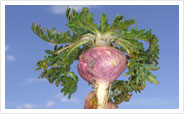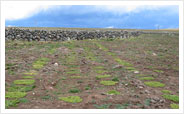|
|
|
|
 |
|
Maca and Culture |
|
| |
Source
 Maca (Lepidium peruvianum Chacon) is the only species in the Andean roots and tubers have a single center of domestication, and diversification of production, which is the Junín highland, or Meseta del Bombon, located in the high sierra of the central zone of Peru, there is no evidence that its cultivation has been carried off the field and less in other countries of the Andean region. Maca (Lepidium peruvianum Chacon) is the only species in the Andean roots and tubers have a single center of domestication, and diversification of production, which is the Junín highland, or Meseta del Bombon, located in the high sierra of the central zone of Peru, there is no evidence that its cultivation has been carried off the field and less in other countries of the Andean region.
It is a tuberous root, domesticated by the Pumpush Junín, a Pre-Inca culture, around 700 BC, who inhabited the banks of Lake Chinchaycocha, as evidenced by the remains found in caves of Pachamachay, now the township of San Blas, Ondores District, Province of Junín and what were their main food source of livelihood.
Geology (Here a great secret)
 The secret of Maca, also lies in the soil where it grows and develops, we see that: The secret of Maca, also lies in the soil where it grows and develops, we see that:
Vasquez Espinoza, mentions that "Maca leaves barren land like fire wherever it was planted, leaving little strength in her ..." The view shared by historian Mary Rostorowsky, this corroborates the view that the farmers planted today, they say that the Maca impoverish the soil and planted on virgin soil, or soil that has been resting for several years.
In the geography of the highlands of Junín, the hills and existing sedimentary rocks belong to the Pucara Group, named for the limestone composed of calcite and dolomite, and other minerals.
The wind and rain dissolve and carry particles of minerals from these rocks elsewhere, such as fine particles which are then absorbed by plants in the first year of cultivation, depleting the soil, which is why farmers rotate the crop in virgin lands to an average of 4 to 5 years, back when the earth has absorbed minerals from the environment and has grown again ichu or grass on it.
This explains the non-use of fertilizers or pesticides, in the planting of Maca farmers by Junín. |
| |
| Example of Strength and Adaptability |
|
In the struggle for survival of the species, according to law biological organisms survive only with strong capacity and adaptability.
Maca is one of the few plants that has adapted to life in the climatic conditions in the Central Andes of Peru, between 4100 to 4500 m, on in this little apartment High Andean species grown, is growing Maca which grows and reproduces at a higher altitude than any other in extreme conditions of altitude and climate, resists frost, hailstorms, drought and strong winds.
It is in this environment where it grows weaker with situations where any other cultivated plant can do, bearing winds, night frosts, periods of drought, rain, etc. This makes the Maca stress develop its defenses expressed in pigments such as anthocyanins that have antioxidant activity beneficial to the plant and allow surviving in such circumstances.
Maca is also resistant to pests and diseases attacking the Andean crops, giving it a lesson of strength, adaptability and resistance to the aggressions of the environment. |
|
|
|
|
|

